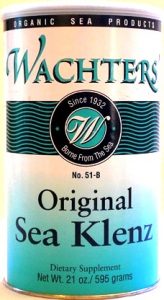Carbohydrates and Fiber
by Bruce W. Chenoweth
There are two basic forms of carbohydrates: complex and simple.
- Simple carbohydrates are one, two, or three units of sugar linked together in single molecules.
- Complex carbohydrates can be hundreds or thousands of sugar units linked together in single molecules.
Simple sugars are sweet. Complex carbohydrates, i.e. potatoes or rice, taste pleasant, but not as sweet.
Simple carbohydrates are not at all necessary to human health. Complex carbohydrates are.
Many long chain complex carbohydrates appear to be critical to a fully functional immune system. An example of this is the phyto-nutrient “acemannon” from Aloe Vera inner leaf gel. This is one of the most effective immune system boosters known. (There is an excellent highly bio-available, very affordable dry powdered form of it called “Verapol®” available HERE.)
The two groups of complex carbohydrates are high fiber and low fiber. Dietary fiber is the part of a plant that provides and maintains the plant’s structure.
Cellulose, hemicellulose, polysaccharides, pectins, gums, mucilages, and lignins are dietary fibers. These fibers are unrelated chemically, however, they all have one thing in common — they can’t be digested by the human body. For this reason, they can help clean and correct disorders of the large intestine and colon, and keep them functioning healthfully.
Fiber is an essential part of your diet. It promotes the wavelike contractions that keep food moving through the intestine. Also, high-fiber foods expand the inside walls of the colon. This eases the passage of waste. Fibrous substances pass through the intestine undigested. They also absorb many times their weight in water, resulting in softer, bulkier stools.
Studies show that rural Africans, who eat diets high in fiber, eliminate food waste in one-third the time it takes people from urban westernized cultures. Their stools are larger and softer.
Because of the greater bulk and speed of foods through the digestive tract, it is believed that harmful substances are also swept out before they can cause problems. In fact, these rural people have fewer of the digestive tract diseases that plague Western man. Based on results, there is an obvious connection.
High-fiber vegetable foods are the healthiest choices for human nutrition, and intake of these foods is associated with lowered incidences of hypertension, cancer, arthritis, diabetes, etc.
Examples are
- celery,
- cabbage,
- lettuce,
- broccoli,
- etc.
Examples of low-fiber, complex carbohydrates are
- banana,
- tomato,
- squash,
- potatoes,
- rice and
- all grains (therefore breads and pastas).
After digestion, carbohydrates appear in the circulatory system in the simple form, as glucose, on its way to the cells where it is used for energy. To be transformed into simple sugars, complex carbohydrates must be digested by the enzyme amylase. This process slows and paces the entry of glucose into the blood stream, providing a more stable, consistent energy and creating less stress than directly consumed simple sugars.
Processing of plant food strips away its fiber and/or vitamin content. In most cases, foods should be eaten raw and whole.
Most of the carbohydrates found in a typical American diet come from grains. Our bodies are not genetically designed to thrive on large amounts of these fiberless complex carbohydrates. With the popularity of breads, pastas, cereal and grain-based foods, carbohydrate metabolism has been upset. It is known that more than ¾ of this country’s population has developed serious health problems from this single cause.
Complex carbohydrate foods with lots of fiber should be consumed for maximum health and vitality. These are also rich sources of necessary vitamins, minerals and phytochemicals as well as enzymes when in the raw state. They are one of the most essential parts of anyone’s Perfect Health program, good health program, or even just a survival health program.
Doesn’t a nice, fresh, leafy green salad with olive oil and vinegar dressing sound wonderful right now?
A few good sources of fiber:
- apple with skin;
- beets;
- blackberries;
- blueberries;
- broccoli;
- cabbage;
- carrots;
- celery;
- chard;
- corn;
- figs;
- green beans;
- green peas;
- kale;
- lettuce;
- orange;
- parsley;
- parsnips;
- pears with skin;
- prunes;
- raisins;
- raspberries;
- spinach;
- sweet potato with skin;
- turnip greens;
- zucchini with skin.
 If you simply cannot bring yourself to eat a proper high fiber diet, daily consumption of a Wachters’ Sea Klenz product can accomplish similar intestinal cleansing results. There are several to choose from.
If you simply cannot bring yourself to eat a proper high fiber diet, daily consumption of a Wachters’ Sea Klenz product can accomplish similar intestinal cleansing results. There are several to choose from.
Click the image on the right for a list, additional information and ordering instructions.





